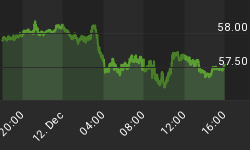Tesla held just a 6.3-percent share of the residential solar installations market in the first quarter of this year, falling to the third place for the first time since Wood Mackenzie began tracking this industry in 2013.
The consultancy said in its latest quarterly report that the number-one solar installations provider in the first quarter was Sunrun, with a market share of 11 percent, followed by Vivint Solar, with a market share of 7.6 percent. Together, the three solar companies installed about a quarter of all residential solar capacity in the United States in the period.
This is less than Tesla’s Solar City’s share of the market at the peak of its performance, suggesting that the company may have decided to stop pursuing growth in this particular industry.
Indeed, a senior solar analyst from the consultancy said in a report from April, “Tesla has essentially thrown in the towel on pursuing growth in the residential solar space because it has concluded that acquiring customers is simply too expensive. Rather, Tesla will rely on its brand power and low-cost referral methods to keep the solar business afloat until it stabilizes.”
Last year, Tesla resorted to price-cuts to boost the sales of its residential solar installations. The company reduced the prices by between 15 and 25 percent for different systems, which translated into quite a substantial discount of between US$3,000 and US$5,000 per system.
The move was part of an ongoing restructuring of SolarCity, which Tesla bought in 2016. The EV maker acquired SolarCity for US$2.6 billion plus the assumption of another US$3 billion in SolarCity debt in 2016. At the time, many questioned the wisdom of such an acquisition given that SolarCity was a cash burner, but since then, Tesla has streamlined the company’s operations as it pursued its plan of growing into a one-stop shop for energy solutions, from batteries to solar rooftops.
Despite this streamlining effort and the 2018 price-cutting move, Tesla installed 41 percent fewer residential solar systems in 2018, which compared with a 37-percent growth in installations for Sunrun and a 7-percent increase for Vivint Solar. Related: Oil Spikes On Soaring U.S., Iran Tensions
In April this year, Tesla said it would cut the prices of its solar panels by as much as 38 percent below the national average, in an attempt to staunch the bleeding. Judging by the Wood Mackenzie data, however, the price-cutting efforts have not done much to boost SolarCity’s market share. On the contrary, according to the consultancy, Tesla’s solar business has been a drag on the entire industry. And these tough times may be here to stay for the foreseeable future.
According to recent reports about Tesla’s solar business, things are unlikely to change anytime soon. One of these reports concerned the price of its much-hyped solar rooftop system, which apparently has a price tag of US$85,300. This makes it prohibitively expensive for much of the population, so its launch is unlikely to have a positive effect on the company’s market share.
This, however, is okay, since most of the solar panels produced at the factory in Buffalo, New York, are being exported instead of installed locally as solar roofs as was the original plan for SolarCity.
Tesla’s total solar sales slumped by 36 percent quarterly and by 38 percent annually in Q1 2019, according to the company’s Q1 update. It doesn’t look like there is light at the end of this particular tunnel that many investors warned Tesla shouldn’t go into back in 2016.
By Irina Slav for Oilprice.com
More Top Reads from Safehaven.com:

















